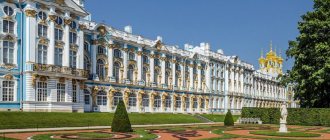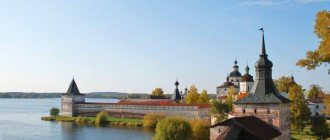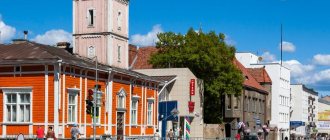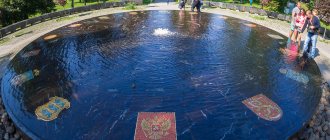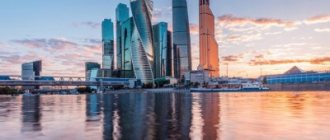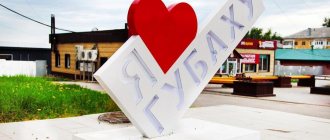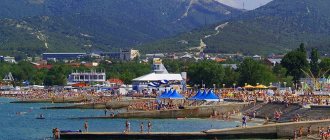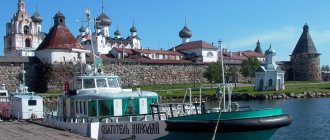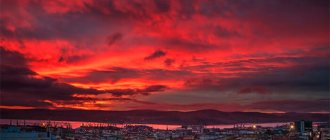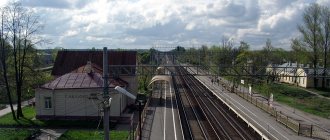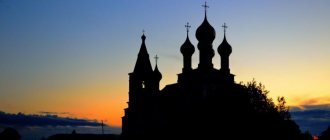Kondopoga is the second largest city in Karelia. It grew from a modest village in the Kizhi Pogost into an independent large city thanks to the discovery of marble deposits and iron ore deposits here. The city is surrounded by many lakes and streams and is famous for good fishing, rafting on the Suna River and natural beauty.
Kondopoga, although smaller than Petrozavodsk, is much more ancient: the first mentions of human settlements in these places date back to 1495. By the middle of the 18th century, when minerals began to be exported from here to St. Petersburg, Kondopoga was a strong village of 48 houses, with its own church, annual fair and school.
From Kondopoga you have the opportunity to visit Petrozavodsk, less known but no less interesting Medvezhyegorsk and other hard-to-reach attractions of Lake Onega.
The city continued to develop during Soviet times, until the collapse of the USSR. Since the 90s, the pace of construction and the population have been gradually declining.
Assumption Church
Address: st. Kondopozhskaya, 118
Created at the end of Russian wooden architecture, which soon gave way to stone construction. The church was founded in 1774 in memory of the peasants who died during the Kizhi uprising. Thanks to two restorations carried out during the Soviet era, the iconostasis and paintings under the dome were preserved. The height of the church is 42 meters, and it is located on the very shore of Lake Onega. The church is part of the Museum of the Kondopoga Region.
Kondopoga Hotels
Tourists, once in Kondopoga, can stay in an apartment, in a tent in the open air, but it is best to rent a hotel room. There are several comfortable hotels in Kondopoga where you can relax after walking around the city and seeing its sights.
One of the best hotels in Kondopoga is the Karelia Hotel . The hotel is located 200m from Lake Onega. It has 50 rooms of different price categories. The hotel has a restaurant, souvenir and grocery store. Breakfast, lunch and dinner, representing Russian cuisine, can be ordered in the restaurant. You can rent skis and bicycles at the hotel. After your walk, you can take a bath and watch TV, which is in every room.The Kondopoga Hotel
accommodates 71 people. It has economical rooms and a two-room Suite. You can eat at the hotel or on your own. Payment for food is included in payment for accommodation. Each room has a TV, telephone and refrigerator. You can go to a restaurant in the evening to not only eat delicious and inexpensive food, but also listen to live music, watch a movie or football on a multimedia screen.
located in Kondopoga. All rooms are renovated. There is a cafe.
Voyage Motel
Today we talked about Kondopoga, whose sights delight, delight, and bring pleasure. We introduced you to the history of the Kondopoga region and its wonderful nature. Come and you will see everything with your own eyes and improve your health.
Carillons
Carillons are compositions of bells that are controlled by a computer and emit a melodious ringing every hour. They arrived in Kondopoga as a gift from Holland. One of the carillons, with 23 bells, is located near the Ice Palace. This is a large arch on which bells of different tones and sizes hang.
The second, smaller carillon can be found on the street. Proletarskaya. It is a tall pillar, stylized as a clock, with diverging rays. 18 bells are hung on them, which every hour remind the townspeople of the transience of time.
Museum of the Kondopoga Region
Address: st. Proletarskaya, 13 Phone: 8 (81451) 7-05-71 Website: https://vk.com/club49286567 Opening hours: Mon-Thu 10:00-18:00, lunch 13:00-14:00. Sunday – 10:00-17:00, lunch 13:00-14:00. Weekends – Friday, Saturday. Cost: adults – 20 rubles, children – 10 rubles
The museum has several exhibitions. The first tells how Kondopoga, from a village of 48 houses, turned first into a transit city through which marble and iron ore were supplied to St. Petersburg, and then into the industrial center of Karelia with metallurgical and paper factories and a hydroelectric power station.
The second exhibition is dedicated to the life of the Karelian people, the third - to the period of the Great Patriotic War, when the city was occupied by German troops. The fourth exhibition, “Big Kondopoga,” will tell about the post-war history of the city.
History of the city of Kondopoga
The settlement of Kondopoga was first known in 1495. Kondopoga is translated as “bear corner” (kondie - bear, pohia - far corner.) In 1757 and 1764, marble deposits were discovered in the villages of Tivdiya and Belaya Gora not far from the settlement, which began to be intensively developed. In those same years, iron ore deposits were discovered. The mined marble and iron ore were transported to St. Petersburg for processing. In 1892, the village had 300 inhabitants and 50 houses. A fair was held annually in September. In 1923, construction began on the Kondopoga Hydroelectric Power Station and the Paper Mill. The population of Kondopoga is growing every year. In 1938, Kondopoga received city status.
Reserve "Kivach"
Address: pos. Kivach Phone: Website: https://zapkivach.ru/ Opening hours: summer time 09:00-21:00, winter time - 10:00-17:00 Cost: from 100 to 800 rubles depending on the type of excursion How getting there: Leaving Kondopoga along the St. Petersburg–Murmansk highway, drive about 21 km. Before the village of Sopokha (493 km of the highway), follow the sign to Kivach - turn left. Next - along the road through the forest.
The name of the reserve was given by its central attraction - the Kivach waterfall, the highest flat waterfall in Europe - over 10 meters.
The reserve was created to protect three pine forests (pine trees are 150-200 years old) from deforestation and the tyranny of tourists. These trees grew on the site of an even more ancient forest, which was cut down for coal production during the time of Peter I. Coal was needed for factories producing cannons, then necessary for the Battle of Poltava.
The pines are under protection, so you can visit the reserve only as part of an excursion accompanied by its employee. In addition to the famous waterfall, there is a museum of natural history and an arboretum on the territory.
Kondopoga HPP
Address: st. Prikanalnaya Phone: Website: https://hydroenergostroy.rf/objects-and-reviews/north-west/54-kondopozhskaya-hydros
The Kondopoga hydroelectric power station on the Suna River is one of the oldest hydroelectric power stations in Russia; its construction began in 1923.
The power plant building is an architectural monument.
Mount Sampo
How to get there: only by your own vehicle (regular buses passing by do not stop). Mountain coordinates: Latitude: 62.04 (62° 2′ 24″ N) Longitude: 34.09535 (34° 5′ 43.26″ E)
This mountain is associated with a beautiful legend about how a blacksmith, as a wedding gift to his bride’s mother, forged the Sampo mill, which miraculously ground everything your heart desires, including money. The mill has not survived to this day, but the mountain is still considered a place of power. If you make a wish near a pine tree growing at the top and hang a rag from your clothes on it, your wish will definitely come true.
The mountain offers a beautiful view of the lake and Karelian forests. The mountain itself is not high, and there are many trails along it, so travelers without special physical training can climb to the top.
Mysticism: the publication “Kondopoga Region” is on the side of the “dark forces”?
Dear Kondopoga residents, did you know that I, editor of the online publication “Kondopoga Region” Sergei Kononov, am a representative of the “dark forces”? Yes! Yes! And there is nothing to be surprised here, because it was precisely this “mighty mystical status” that the head of the district administration, Vitaly Sadovnikov, “rewarded” me in one of his conversations with local residents.
From the editor of “Kondopoga Region”
According to Article 41 of the Federal Law “On the Mass Media,” a journalist has the right not to disclose sources of information.
To be honest, this interpretation of my “dark power” even flattered me. Vitaly Mikhailovich knows how to curtsey! Oh he can! I applaud him! And it doesn’t matter at all what epithets he uses; in this case, the only important thing is that my activities as editor of the Kondopoga Region do not go unnoticed by our local authorities. And Mr. Sadovnikov speaks about this openly, veiling his negative attitude towards me with a clever phrase about “dark forces”, apparently from some reference book on esotericism that caught his eye?
From the editor of “Kondopoga Region”
I wonder what kind of books on esotericism Mr. Sadovnikov has read or what films he’s seen enough to make such specific conclusions about my belonging to the “dark forces”?
It’s strange that Vitaly Mikhailovich in his interpretation did not expand the concept of “dark forces”, referring, for example, to Hebrew mythology and not calling me a supporter of Lucifer - Satan - the Devil... It would have been more fun.
Oh well, that's enough for me.
It is enough for me that, according to the head of the district administration, I am a representative of the “dark forces.” If the highest official of our district said so, we will not argue with it. Vice versa. Let's pick up this baton. All that remains is to dress in all black, straighten a dark halo over your head and throw evil lightning at representatives of the “light forces”, mercilessly punishing them for their “bright and good tricks”...
Unfortunately, there was no black T-shirt for a more plausible photo shoot for this unexpected scenario. There is more than enough lightning around. But there are still problems with the black wardrobe. Apparently, it's time to correct this mistake...
If Vitaly Mikhailovich is a little “pressed” somewhere and his loquaciousness gives way in unrestrained statements, then I dare to remind our head that the people say “The word is not a sparrow. If it flies out, you won’t catch it,” and not “The word is a sparrow. Catch up and finish off." Any public statement by an official always has the ability to “fly” among the people and come under criticism if the statement is unusual, quite interesting and non-standard from the point of view of logic and personal opinion of the speaker. And in this case, the statement about “dark forces” became the highest splendor of Mr. Sadovnikov’s vocabulary. Personally, I applaud him! Non-standard thinking, and even involving mystical and esoteric terms, shows that Vitaly Mikhailovich puts me on the other side of the “good forces”, where he himself, apparently, is located and thriving. This is very good. This means that I am that “stumbling block” that cannot be bypassed or removed from the road. And sending me to the “dark forces” is the only thing left for our leader to show his superiority over an extremely inconvenient enemy that interferes with his peace of mind, his sweet sleep, his efforts in productive work and his radiant splendor in the eyes of the local population?
If, in fact, according to the head of the district administration, I am a representative of the “dark forces”, which logically bring evil and chaos into this world, then it means that the authorities (officials, deputies and others in power) are “light forces”, bringing light and goodness to this world? It is quite possible... Maybe, indeed, our local authorities, carrying out sophisticated optimizations, bring us only light and goodness? Maybe, indeed, our local authorities, leaving dozens of people without work, consider themselves the bearer of “local happiness”? Maybe, indeed, our local authorities, creating a huge gap between the level of well-being of their own and the impoverished population, consider themselves to be bringing the “holy fire” to the masses? Etc., etc. And she – this local government – is the “bright side of life”, representatives of the “light forces”? So be it... Why argue with them? If local authorities consider themselves to be “the bright side of life”, let them do so. We’ll even play along with her, but we’ll just draw our own conclusions. Our own!.. Moreover, the “dark and light” forces in the local interpretation are better, more qualitatively and more emotionally spoken by ordinary people, who sometimes do not have the habit of being shy in their expressions and who sometimes think more intelligently than heads of various levels and other ministers.
From myself personally:
To be honest, I absolutely don’t care what status I am “rewarded”. "Light forces"? "Dark"? Or some other comparative esoteric-mystical terms? I absolutely don’t care who I’m considered a supporter of: a supporter of Light or Darkness, a supporter of God or Lucifer. For me, the main thing is that the results of my journalistic activity achieve their ultimate goal and “move” local authorities in making adequate decisions and correcting mistakes and “jambs” that they themselves create, and correcting the world that they themselves created with their “backbreaking work.” "create.
Sergei Kononov
PS
Dear Vitaly Mikhailovich (I am addressing the head of the district administration, Mr. Sadovnikov), I apologize for the unusual collage where you are with a halo above your head and the wings of an Angel. I would draw one like this for myself and would be delighted with such a portrait to the point of moral ecstasy, but you, Vitaly Mikhailovich, have a different opinion about me. After all, my place is next to lightning on the “dark side” of forces? Is not it? And I have no doubt at all that there will be numerous supporters supporting you. Local officials; representatives and supporters of the United Russia party; most of the deputies of the city and district councils; management of the Kondopoga Pulp and Paper Mill and Karelia Pal LLC; government of Karelia; your relatives and your friends; etc., etc. - I can assure you that they will all really like this collage. After all, your radiant splendor will correspond to the status in which you now find yourself, and will correspond to the actions for the benefit of the city and region that you take (from the point of view of your supporters who support you).
And one moment.
Wings are wings! “Flying carelessly at the top,” fulfilling the will of the higher management, is, of course, a good thing and is always welcomed by senior officials, but isn’t it time, having made a few wide flaps of these same wings to land, descend to the ground and join the people, who wants one thing, and sometimes you do something completely different? And the fact that the “dark side” of forces interferes with you (I’m talking about myself), so you simply don’t give reasons for justified criticism and targeted information attack... For example, put your signature on the documents that decide the fate of condo residents only when you are completely sure , that this is for good, and not for harm! Know how to be responsible for your words! Know how to be responsible for your actions, actions and decisions! Know how to “take the hit”! And then the people will begin to believe and trust you! And the “dark side” of the forces, having lost interest in you, will find other objects for itself, which it will blind, strike and “bring to their senses” with “punishing lightning”. Moreover, I, Sergei Kononov, am even ready to support you if the above is implemented by you in practice and becomes your beacon in your activities as head of the district administration. Amen…
Required Note:
I hope the word “amen” at the end of the phrase did not lead you, Vitaly Mikhailovich, into a religious stupor? After all, this word translated from ancient Greek and Hebrew means “true,” “so be it,” and from Aramaic means “truth.” And this word is intended to confirm the truth of the spoken words...
With hope for a change in the situation, representative of the “dark forces” Sergei Kononov
Original
Konchezersky Iron Smelting Plant
If your soul craves picturesque ruins, go to the village of Konchezero, to the iron smelter of the same name. It was founded, like most Karelian industries, by Peter I and built using German technologies by an architect from Germany. The operation of the plant is based on the energy of water from Konchezero (low) and Petrosero (high). The isthmus between these lakes served as a natural dam for the plant. Production included not only blast furnaces for pig iron, but also a hammer shop, a dam and a copper smelter.
At the end of the 18th century, the Konchezersky plant became part of the Alexandrovsky plant. A British metallurgist took him under the wing, reconstructed and launched production, which continued its work until 1905, when the decision was made to close. Since then, the buildings and workshops have been gradually collapsing, despite the fact that in 2010 local residents filed a petition to restore some of the buildings. The plant is a monument of industrial architecture.
Sights of Kondopoga
But in fact, Kondopoga does not look like a forgotten land.
There are many modern buildings in it, even too many for the 30 thousand residents of 9-10 storey buildings. There is a city administration building, youth clubs, cinemas. The Ice Palace is famous, the largest Sports Palace in the world.
What to see in Kondopoga to remember the Karelian land forever?
There are many attractions in Kondopoga. We will get to know some of them.
- The Kondopoga hydroelectric power station on the Suna River is the oldest hydroelectric power station in Russia. Its construction began back in 1916 and ended in 1929. The hydroelectric power station building was created a long time ago and has survived to this day as an architectural monument.
It is also a wonderful ancient monument. It was built back in the time of Peter 1 using German technology, which is based on the energy of the water of two lakes - Konchezero and Petrosero. The dam for the plant was the natural isthmus between them. In addition to the dam, the plant included a copper smelter, a hammer workshop, and blast furnaces for cast iron.
Konchezersky Iron Smelting Plant
At the end of the 18th century, the Konchezersky plant became part of the Alexandrovsky plant. It was reconstructed and worked for several more years. In 1905, a decision was made to close it.
More than a hundred years have passed. The plant gradually collapsed. Now it is a monument of industrial architecture.
One of the remarkable ancient monuments is the Assumption Church. It is made of wood. Its height is 42m. The Assumption Church was created in memory of the uprising of Kizhi peasants in 1769-1771. The fact is that it was wartime, guns and weapons were needed. The peasants were herded into the factory and forced to work from morning to night. There was no time to engage in agriculture. Unable to endure humiliation and difficult working conditions, the peasants rebelled.
The church was created in a tent style. This was the last wooden structure of that century, which swept through Russia like a loud swan song. Wooden buildings were replaced by stone structures. In the 20th century it was restored 2 times. The cathedral has preserved the iconostasis and the sky painting under the dome. It is presented in the form of the Divine Liturgy.
The Assumption Cathedral stands on the shore of Lake Onega. Like a guiding star, he guides travelers and the lost. His unity with nature is striking. The lip, jutting deep into the lake, is surrounded by forests, and on its edge stands the Assumption Cathedral, to which a well-trodden path leads. And all around is peace and quiet, blue water, blue sky and white clouds. The picturesque beauty of nature around the ancient building beckons and calls to itself. On great religious holidays, services are held here.
The charm of the Karelian region cannot be described; there are no words to express the delightfulness, inimitability, enchantment of lakes, rivers, forests that cover the entire territory of the Kondopoga area, caressing the eyes of city residents and tourists.
talks about the life of the city's population, introduces its historical past.
Museum of the Kondopoga Region
The museum has 4 exhibitions.
The first of them tells how a small village, consisting of 48 houses, gradually turned into a prosperous city of 30 thousand inhabitants.
We get acquainted with documents and photographs that tell how marble deposits and iron ore deposits were discovered in the villages of Tavdiya and Belaya Gora, how the city of Kondopoga first became a transit point transporting mined raw materials to St. Petersburg, and then with the construction of a paper mill there. and metallurgical plants, hydroelectric power stations, it turns into an industrial one.
The second exhibition is dedicated to the life of the local population, the entire Karelian people. You will see the national clothes of the Karelians, their household items.
In the third exhibition you will get acquainted with the heroes of the Great Patriotic War who fought against the German occupiers, and with how life was in the city at that time.
The fourth exhibition is called “Big Kondopoga”. It introduces the post-war life of the city's population, its growth and prosperity. with the construction of structures and attractions. In the museum you can also see paintings by local artists who have been working for many centuries.
Kondopoga is famous for its carillons , sent as a gift to the city from Holland. On Proletarskaya Street there is a pillar with a clock - a carillon with 18 bells. They are controlled by computer. Every hour he strikes the time in the form of some kind of melody. The carillon is the only attraction of Kondopoga that is not found in any city in Russia. The clock-shaped carillon reminds residents and travelers of the transience of time.
Opposite the Ice Palace there is a carillon in the form of an arch. It has 23 bells. Each of them has a certain tonality and size. Therefore, when they sound, they produce a kind of beautiful melody. The computer-controlled carillon plays not just one melody, but several. One melody replaces another. It's nice to listen to the bells ringing in the form of various musical works and admire the architecture of the Ice Palace.
Europe's largest sports facility. It shines and shimmers in the sun with its glass and mirror metal. It appeared in December 2001. The palace consists of 2 blocks. One block is an Ice field and a grandstand, 2 blocks are two sports halls equipped with modern equipment. Training and competitions take place here. The palace can accommodate 1850 people. Figure skating and hockey tournaments held at the Ice Palace have a regional and international level. Ice shows and concerts of pop stars are held in the palace premises. You can go ice skating on weekdays and weekends at any time of the year.
Ice Palace -
In the Kondopoga district there is a mud resort “Martialnye Vody”. It was founded by Peter 1 in 1719. Mineral ferruginous springs became the basis for its creation. And the source was discovered by Ivan Ryaboev, who in 1714 looked after the iron ore carriers. Ivan Ryaboev suffered from cardiovascular disease. He discovered an ice-free spring, drank from it and felt better. He told about this to the manager of the Konchezersky iron smelting plant, Zimmerman, who reported this to Admiral Fyodor Apraksin. In 1717, Lavrentiy Blumentrost carried out a chemical analysis of water, which showed the presence of iron in it, calling it marcial after the god of iron and fire, Mars. Peter 1 issued a decree on the opening of the resort.
For the treatment of Peter, 3 palaces were built. A carved tent appeared over the source. In modern times, the Church of the Apostle Peter and the bell tower have reached us. The Museum of Martial Waters is also open. 2 sanatoriums were opened: the first was the Palaces health center, which appeared in 2002, and the Marcial Waters resort, which appeared in 1964. There are covered pavilions above the source. You can drink water for free. Only in this case you need to take a straw so as not to spoil the tooth enamel. Water cannot be stored for a long time, because it loses its healing properties. After a few hours, a rusty sediment appears in the bottle. The importance of marcial water is enormous: it promotes the production of gastric juice, improves the motor activity of the gallbladder, and is a choleretic agent, therefore it is used for gastritis, cholelithiasis, and some kidney diseases. The water contains a lot of manganese, calcium, magnesium, sodium, so it improves the condition of people with heart disease and the digestive system, regulates metabolism, increases hemoglobin in case of anemia, and cleanses the body in people who received radiation exposure during disasters.
